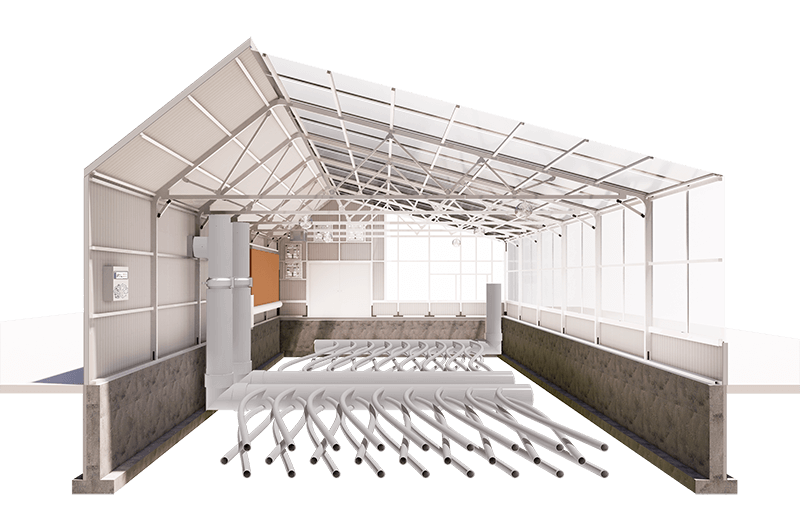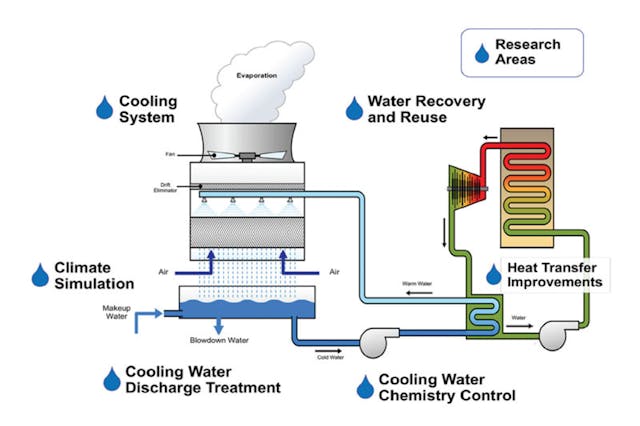A Comprehensive Guide to Choosing the Right Heat Transfer Systems for Your Requirements
Selecting the suitable Heat transfer system is crucial for functional efficiency. Various systems satisfy various needs, influenced by aspects such as temperature level range and liquid type. Recognizing the concepts behind Heat transfer, such as convection, conduction, and radiation, is crucial. Additionally, evaluating power sources and upkeep methods can affect lasting efficiency. A closer assessment of these considerations discloses exactly how to tailor a system to specific demands. What should one prioritize in this complicated decision-making procedure?
Comprehending Heat Transfer: Key Ideas and Concepts
Heat transfer might appear like a straightforward concept, it includes a range of concepts that are fundamental for effective system design - DVS Heat Transfer Systems. Understanding these concepts is necessary for designers and designers that intend to enhance thermal performance in different applications. Transmission, as an example, involves the transfer of Heat through strong materials, while convection refers to the motion of Heat within fluids. Radiation, another essential principle, explains just how Heat can be transferred via electro-magnetic waves. Each of these mechanisms plays a crucial function in identifying how power moves within a system. By completely comprehending these concepts, experts can make enlightened choices, ensuring that Heat transfer systems operate successfully and fulfill the details needs of their applications
Kinds Of Heat Transfer Equipments: An Introduction
Comprehending the principles of Heat transfer lays the foundation for checking out the different kinds of Heat transfer systems readily available. Heat transfer systems can be classified mainly into three types: conduction, convection, and radiation. Conduction entails Heat transfer with solid materials, counting on direct get in touch with in between bits. Convection, on the other hand, occurs in liquids (liquids and gases) where the motion of the liquid itself facilitates Heat transfer. Radiation includes the transfer of Heat with electro-magnetic waves and does not require a tool, enabling it to happen in a vacuum. Each kind of system has distinct features and applications, making it necessary for individuals and companies to meticulously assess their certain demands when selecting one of the most suitable Heat transfer option.
Applications of Heat Transfer Equipments in Different Industries
Heat transfer systems play an essential role throughout different sectors, impacting efficiency and item quality. In commercial manufacturing processes, they facilitate specific temperature level control, while in food and drink handling, they guarantee security and conservation. Additionally, a/c and climate control systems depend greatly on effective Heat transfer to maintain comfortable environments.
Industrial Production Processes

Various commercial production processes count greatly on effective Heat transfer systems to make best use of efficiency and enhance product top quality. In fields such as metalworking, Heat exchangers play a vital duty in preserving excellent temperature levels throughout welding, casting, and forging. These systems guarantee uniform Heat circulation, which is crucial for achieving preferred product buildings. In a similar way, in the chemical production market, Heat transfer systems help with exact temperature level control throughout responses, influencing return and safety and security. In fabric manufacturing, effective Heat monitoring is crucial for dyeing and completing processes, affecting shade uniformity and material high quality. By choosing ideal Heat transfer modern technologies, manufacturers can improve power performance and minimize functional prices, ultimately bring about a more affordable and lasting production atmosphere.
Food and Drink Handling
Effective Heat transfer systems are just as vital in the food and drink processing sector, where preserving ideal temperature levels is essential for food safety and top quality. These systems play a necessary role in processes such as pasteurization, food preparation, and sterilization, making sure that items are safe for usage and retain their dietary value. Heat exchangers, for example, effectively move Heat in between fluids, enhancing power usage while minimizing temperature variations. Additionally, refrigeration systems are essential for protecting subject to spoiling products and expanding shelf life. The choice of Heat transfer innovation directly impacts operational performance and product honesty, making it critical for food and beverage producers to select the suitable systems customized to their details handling needs. This mindful option ultimately contributes to customer contentment and food safety.

Cooling And Heating and Climate Control
While many markets depend on Heat transfer systems for efficiency, COOLING AND HEATING (Heating, Ventilation, and Air Conditioning) plays a necessary duty in preserving indoor environment control throughout various settings. These systems utilize Heat transfer principles to control air, temperature level, and humidity quality, ensuring comfort and safety and security in domestic, industrial, and commercial environments. Effectively developed HVAC systems enhance power efficiency, decrease functional prices, and lessen ecological influence. In commercial buildings, for circumstances, reliable environment control adds to employee productivity and client fulfillment. In industrial applications, HVAC systems help preserve optimal problems for equipment procedure and product conservation. Selecting the right Heat transfer system is vital for conference particular climate control requirements and accomplishing overall system efficiency.
Assessing Power Sources for Heat Transfer Systems
In examining energy resources for Heat transfer systems, a contrast of renewable energy options and nonrenewable fuel source factors to consider is crucial. Eco-friendly resources, such as solar and wind, deal sustainable options that can reduce environmental effect. Conversely, nonrenewable fuel sources stay common as a result of their well-known facilities and power density, prompting a mindful assessment of both options.
Renewable Resource Options

Nonrenewable Fuel Source Considerations
Evaluating fossil fuel factors to consider is essential for the efficiency and sustainability of Heat transfer systems. Fossil fuels, such as gas, oil, and coal, are standard energy sources that provide considerable Heat result, making them prominent options for industrial and household applications. Their environmental impact, including greenhouse gas exhausts and resource exhaustion, increases concerns. When choosing a warmth transfer system, it is vital to evaluate the availability, expense, and regulative elements connected with these fuels. Furthermore, the performance of fossil gas systems need to be thought about, as greater performance can reduce some ecological downsides. Eventually, a well balanced strategy evaluating link performance and sustainability can assist decision-makers towards one of the most suitable Heat transfer solution for their specific demands.
Aspects to Take Into Consideration When Selecting a Warm Transfer System
Choosing an ideal Heat transfer system needs cautious factor to consider of numerous elements that can substantially influence effectiveness and performance. One crucial factor is the operating temperature variety, which determines the products and design appropriate for the application. Furthermore, the sort of liquid utilized in the system-- whether gas or fluid-- affects Heat transfer performance and compatibility. The system's dimension and capability must straighten with the particular needs of the operation to stay clear of inadequacies. Energy resource accessibility is likewise important, influencing operating expenses and sustainability. In addition, the installment atmosphere, consisting of space restraints and accessibility for upkeep, plays a considerable function in system selection. Lastly, regulatory conformity and safety and security requirements must be considered to assure the system satisfies all lawful needs.
Upkeep and Performance Optimization for Heat Transfer Equipments
Keeping Heat transfer systems is crucial for making sure maximum performance and durability. Regular maintenance tasks, such as cleaning Heat exchangers and checking insulation, help linked here prevent performance losses because of fouling and thermal bridging. Furthermore, keeping track of system criteria, consisting of pressure and temperature level, permits very early detection of anomalies, reducing downtime and pricey repair work. Applying a precautionary upkeep timetable can maximize performance and prolong the life expectancy of components. In addition, updating to advanced control systems can enhance operational efficiency by getting used to varying loads and problems. By prioritizing maintenance and effectiveness optimization, drivers can achieve reduced energy usage, reduced operational prices, and enhanced general system integrity, ultimately resulting in far better source use and an extra lasting procedure.
Future Trends in Heat Transfer Technologies
As industries significantly focus on sustainability and energy efficiency, future fads in Heat transfer innovations are set to go through considerable improvements. Technologies such as advanced materials, consisting of carbon nanotubes and nanofluids, assure enhanced thermal conductivity and performance. Furthermore, the integration of renewable energy resources into Heat transfer systems is gaining energy, advertising eco-friendly options. Smart modern technologies, including IoT sensors, are anticipated to change monitoring and control, enabling real-time information analysis for optimized efficiency. The development of modular and portable systems will assist in much easier installation and maintenance, providing to diverse applications. These advancements show a shift towards more lasting, reliable, and versatile Heat transfer remedies, aligning with global energy objectives and environmental criteria.
Often Asked Questions
What Are the Ecological Effects of Heat Transfer Solutions?
The ecological effects of Heat transfer systems can consist of greenhouse gas discharges, power consumption, and possible thermal pollution. Furthermore, improper disposal of ineffectiveness and materials can contribute to resource exhaustion and community disturbance.
Just how Do I Compute the Cost-Effectiveness of a Warm Transfer System?
To calculate the cost-effectiveness of a warmth transfer system, one have to assess initial prices, functional costs, maintenance requirements, and power efficiency, comparing these elements versus the anticipated life expectancy and performance of the system.
Can Heat Transfer Systems Be Made Use Of in Residential Settings?
Heat transfer systems can indeed be made use of in domestic setups. They give reliable home heating and cooling down solutions, making homes extra comfy while potentially decreasing power prices. Their flexibility enables various applications in domestic atmospheres.
What Safety And Security Rules Put On Heat Transfer Solutions?
Security laws for Heat transfer systems commonly consist of standards on procedure, installment, and upkeep. Compliance with local building ordinance, manufacturer specifications, and industry standards is necessary to assure effective and safe system performance in numerous applications.
Exactly How Do Various Products Affect Heat Transfer Performance?

Conduction, for circumstances, entails the transfer of Heat via solid products, while convection refers to the movement of Heat within liquids. Understanding the principles of Heat transfer lays a fantastic read the foundation for exploring the different types of Heat transfer systems readily available. Heat exchangers, for instance, effectively move Heat in between fluids, optimizing power use while lessening temperature changes. In evaluating energy resources for Heat transfer systems, a contrast of renewable energy options and fossil gas factors to consider is essential. Steels, such as copper and light weight aluminum, conduct Heat properly, whereas insulators like rubber and glass reduce down Heat flow.